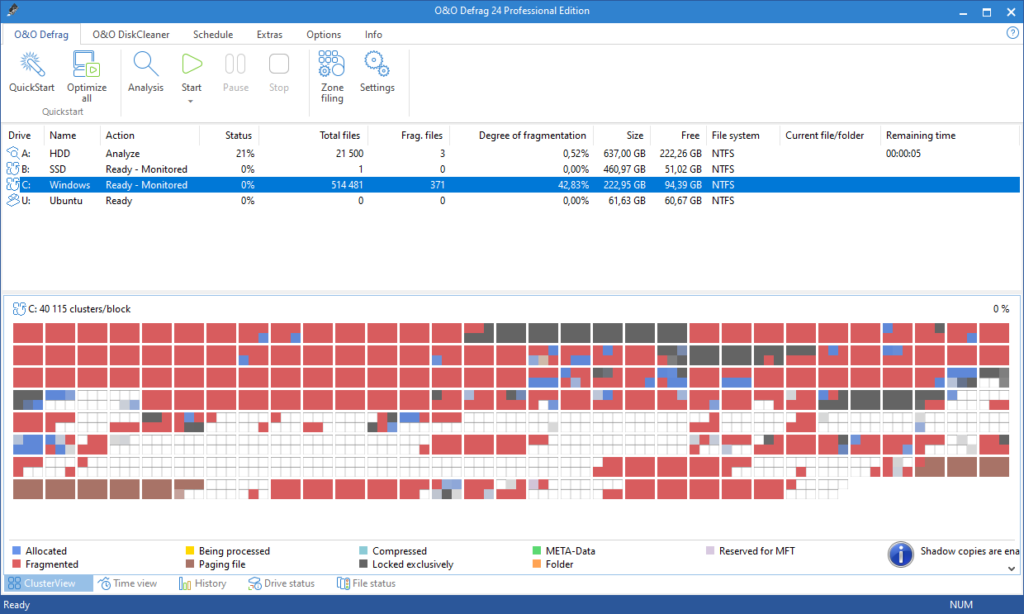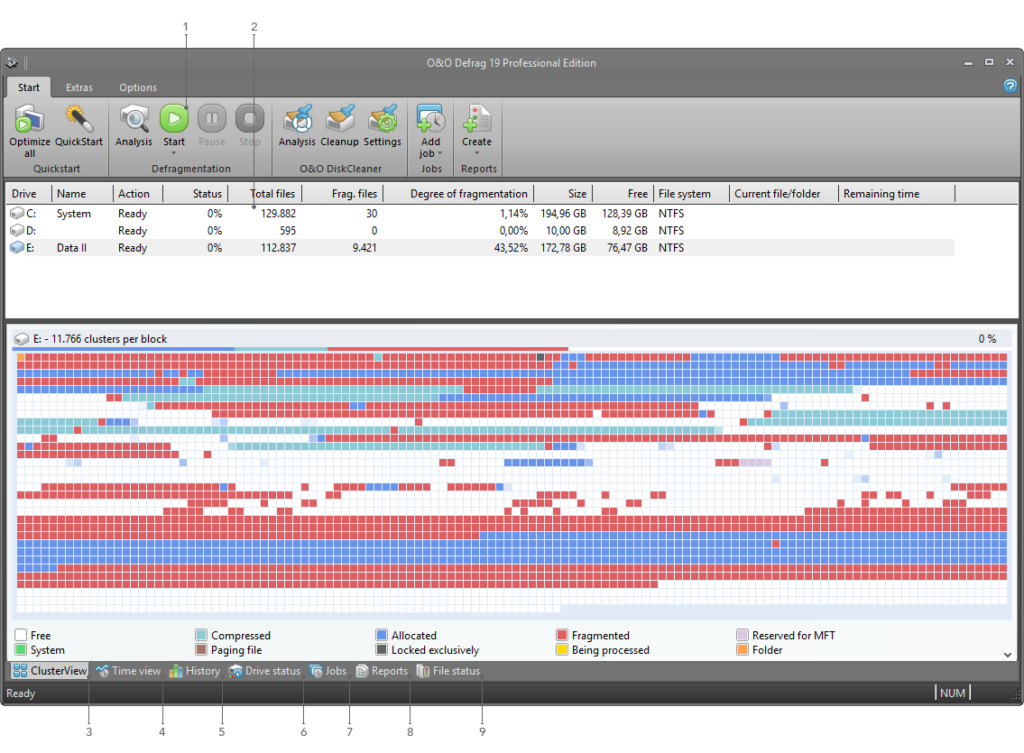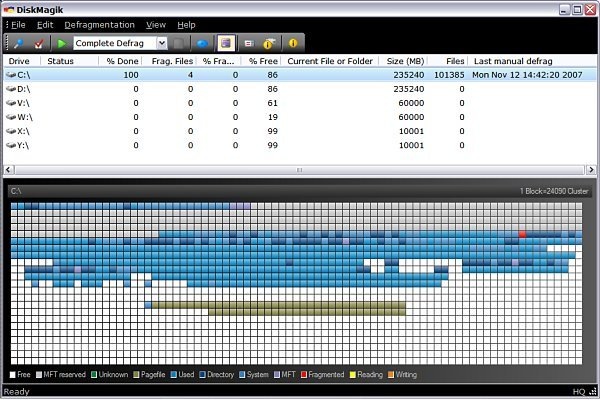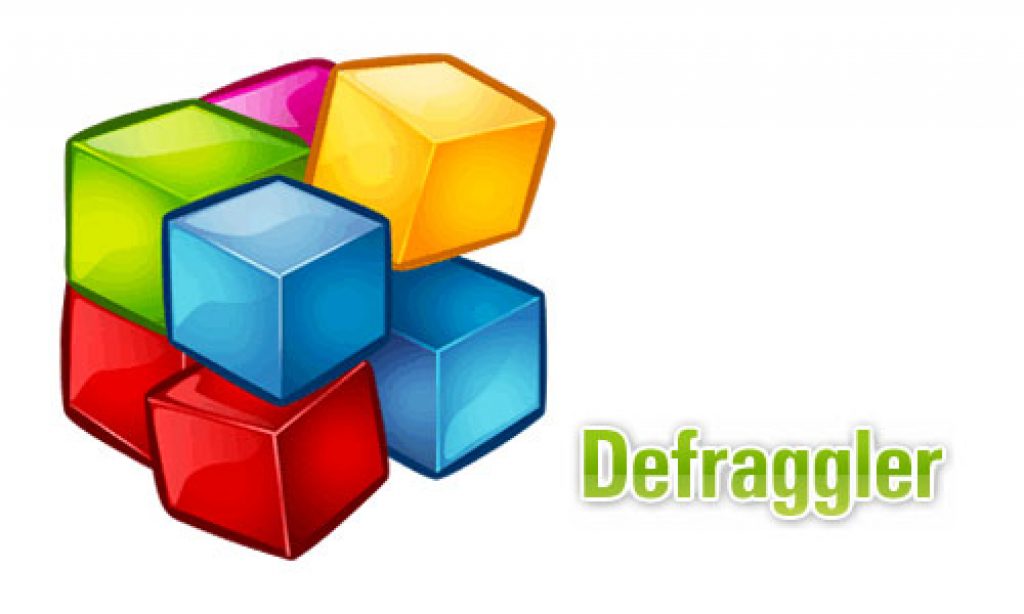Pc defragmentation software free download
Defragmentation is the process of reorganizing the fragmented data on a hard drive to improve efficiency and speed. Over time, as files are created and deleted, data becomes scattered across the disk. This scattering can slow down your PC as it takes longer to retrieve files.
“Defragmentation helps to streamline file access, leading to improved performance.” — Tech Expert
Software Features
- Comprehensive System Analysis: Provides detailed reports on hardware and software performance.
- Real-Time Monitoring: Tracks CPU, RAM, disk usage, and temperature in real-time.
- Error Detection: Identifies potential issues and suggests fixes for improved performance.
- User-Friendly Interface: Easy navigation and clear layout for all users.
- Compatibility Checks: Ensures that your hardware is compatible with various software applications.
- Benchmarking Tools: Assess the performance of your hardware against industry standards.
- Disk Management: Analyze disk health and optimize storage usage.
- Network Diagnostics: Troubleshoot network issues and monitor connectivity.
- Scheduled Scans: Set up automatic scans to maintain system health regularly.
Technical Specifications of This Release
- Version: PC Diagnostic Software v1.4
- Interface Language: English
- Design by: [Developer Name]
- Type of Game/Software: Utility
- Audio Language: N/A
- Uploader / Repacker Group: [Group Name]
- File Name: PCDiagnosticSetup.exe
- Download Size: Approximately 40 MB
System Requirements for PC
Minimum Requirements
- OS: Windows 7 (32-bit or 64-bit)
- Processor: 1.5 GHz CPU
- RAM: 1 GB
- Disk Space: 100 MB free space
Recommended Requirements
- OS: Windows 10 (64-bit)
- Processor: 2.0 GHz Dual-Core CPU
- RAM: 4 GB
- Disk Space: 200 MB free space

Common Issues and Troubleshooting
Some common issues you may encounter include:
- Software Crashes: Ensure your software is up to date.
- Slow Performance: Try running the defrag in Safe Mode.
- Insufficient Disk Space: Make sure you have enough free space before defragmenting.
Comparing Built-in vs. Third-Party Software
| Feature | Built-in Windows Defrag | Third-Party Software |
|---|---|---|
| Ease of Use | Very user-friendly | Varies |
| Performance | Basic | Often faster |
| Additional Features | Limited | Comprehensive options |
| Cost | Free | Free or paid |

User Tips and Best Practices
- Backup Your Data: Always back up important files before defragmenting.
- Avoid During Heavy Use: Defragment when you are not using the computer heavily.
- Regular Maintenance: Incorporate defragmentation into your regular maintenance routine.

How to Download and Install the Software
To download the PC diagnostic software, click on the download button provided on the official website. Follow the instructions to download the setup file. After downloading, run the setup and follow the on-screen instructions. You may need to enter a password provided on the site to complete the installation. Once installed, launch the software and start diagnosing your PC!
How to Install After Download
Locate the Setup File: After downloading, navigate to your downloads folder.
Run the Installer: Double-click on the setup file to initiate the installation process.
Follow the Installation Steps: Accept the terms and conditions, select your preferences, and click “Install.”
Complete the Installation: Once finished, click “Finish” and open the software to start assessing your system.
By following this guide, you can easily download and install PC diagnostic software that helps you monitor and maintain your computer’s health, ensuring optimal performance and longevity. Enjoy a more efficient computing experience!
Top Free Defragmentation Software
Here are some popular free defragmentation tools you can consider:
| Software Name | Features | Download Link |
|---|---|---|
| Defraggler | Fast defragmentation, user-friendly UI | Download Defraggler |
| Smart Defrag | Automatic defrag, disk optimization tools | Download Smart Defrag |
| Auslogics Disk Defrag | Scheduled defrags, free space consolidation | Download Auslogics |


Leave a Reply